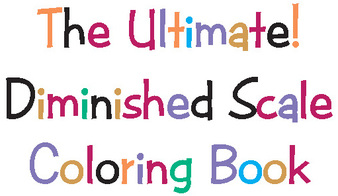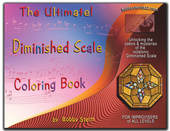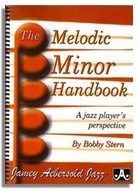
Talkin' 'bout the triad.
It's no secret that the triad - a 3-note structure comprised of a pair of Major and/ or minor 3rd intervals - forms the cornerstone of functional Western harmony.
Even though this might seem like an elementary concept for some, a full understanding and command of the use of triads - along with their inversions and permutations - are a must for any competent improviser, and as mentioned previously, it's one of the basics deserving of a periodic refresher.
Ex. 1 - Major Scale Triads in Root Position
Upper case roman numerals are commonly used for Major and Augmented triads, while lower case roman numerals represent minor and diminished triads (the graphic in Ex. 2 below has it right).
Ex. 2 - Melodic Minor Scale Triads in Root Position
In other words, Maj 3rd plus min 3rd = Maj triad (C-E-G), while min 3rd plus Maj 3rd = min triad (C-Eb-G). This is just one more example of the beauty of a simple, universal truth.
Lowering the fifth degree of a minor triad by a half-step creates 2 minor 3rds = a diminished triad (root - C, min 3rd - Eb, diminished 5th - Gb). Raising the fifth degree of a Major triad creates 2 Major 3rds = an augmented triad (root - C, Maj 3rd - E, augmented 5th - G#).
A triad can be inverted. For example, C-E-G in root position becomes E-G-C (min 3rd plus perfect 4th) in its first inversion and G-C-E (perfect 4th plus Maj 3rd) in its second inversion. Because of these differences in interval make-up, the sonic character of the triad is changed, while still maintaining its Major quality. The same is true for minor triad inversions.
Because the structure of both Augmented and diminished triads are symmetrical, the effect of inversion is less pronounced, and depends on where the triad is situated as part of a lager chord (7th, 9th 11th & 13th) as an extension or upper structure triad.
Ex. 3 below illustrates a 4-bar descending sequence made up almost exclusively of descending triads with the same shape, through various inversions over a not too uncommon I - VI - ii - V - I - biii - ii - bII chord progression.
The top note of each 4-note broken chord grouping descends, first by a whole-step in bar #1, then by a half-step through the first chord of bar #4. Except for the final bar, the first note of each grouping repeats.
The numbers under each triad represents its individual parts, whereas the roman numerals above indicate that chords position in the progression. For example, R-5-3 under the first triad in bar #1 (C), means root - fifth - third in descending order, while the roman numeral I above it shows it as the tonic chord in the key of C Major.
Ex. 2 - I-VI-ii-V-I-biii-ii-bii chord sequence w/ chromatically descending top line. *(R and 1 are interchangeable)
As it turns out, A7alt happens to be derived from the 7th scale step of... Bb Melodic Minor. So we're looking at a Bb min triad in terms of an A7 with a b9 and b13, as it resolves neatly and naturally into the D min triad, the first chord in bar #2 and the ii chord in the key of C Maj.
The same thing happens with the second chord in that measure - G7alt - formed from the 7th scale step of Ab Melodic Minor. It functions as the dominant (V) in the key of C Maj, to which it resolves in bar #3, and is represented by an E min triad (5-3-7 of C Maj7).
Sliding down a half-step in parallel, the Eb minor triad (b3-1-5) functions as a (biii) tritone substitution for the A7 (VI) in bar #1. Looking at it in terms of an A7, the Eb min triad provides the 13-b5-b9, and functions nicely as a dominant even though no tritone is present.
Moving on to bar #4 with a D min triad (ii) and a change of shape (b3-5-R-9). The descending top line is now complete. It continues with a Db7b9 (bII) as a diminished 7th arpeggio and another tritone substitution, this time for G7, which resolves back to the tonic (I), C Maj in bar #1.
Command of triads is an essential skill for the improviser, regardless of style.
Next stop, Triad Pairs.
B. Stern
*** Directions & Connections - Alternating Triads in a Pair ***
*** 'Tranein' with Triads - "Coltrane Changes" - Alternating Major & Minor Triads ***
*** Hexatonic Triad Pairs: Vol 1 - Major Scale Pairs***



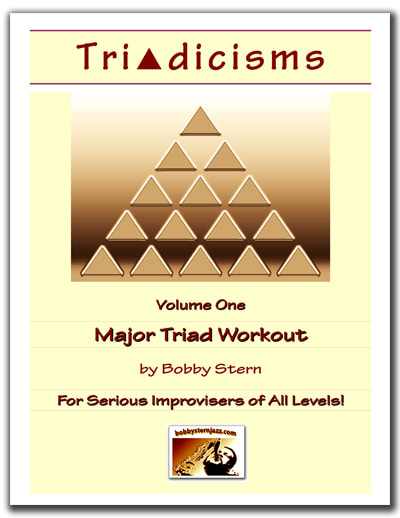
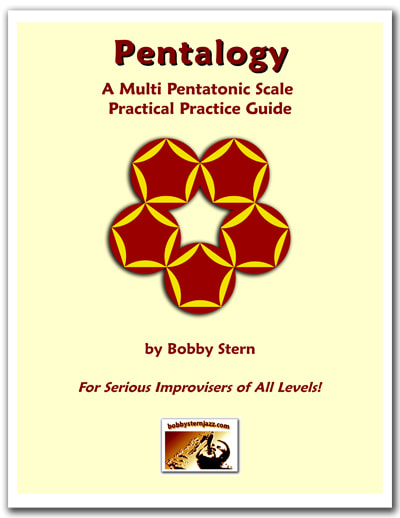
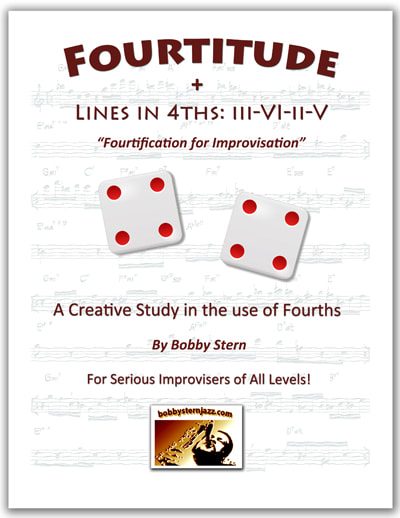
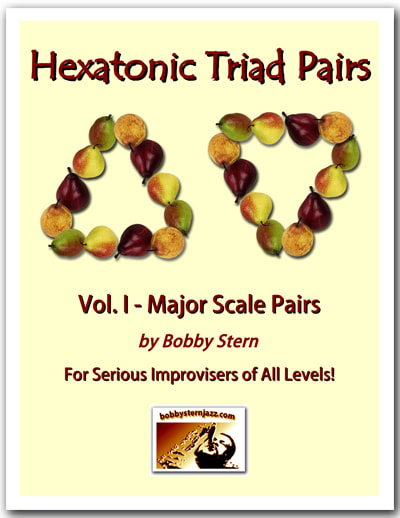
 RSS Feed
RSS Feed



